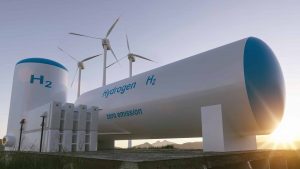Green Hydrogen:

The Narendra Modi government’s National Hydrogen Mission is kick-starting with the Indian Oil Corporation (IOCL) floating a global tender to set up green hydrogen generation units at two of its big refineries in North India.
- IOCL is India’s largest commercial undertaking, operating the largest number of refineries in the country.
Green hydrogen:
- Hydrogen when produced by electrolysis using renewable energy is known as Green Hydrogen which has no carbon footprint.
- The hydrogen that is in use today is produced using fossil fuels, which is the primary source.
- Organic materials such as fossil fuels and biomass are used for releasing hydrogen through chemical processes.
Significance of Green Hydrogen:
- Green hydrogen energy is vital for India to meet its Nationally Determined Contribution (INDC) Targets and ensure regional and national energy security, access and availability.
- Green Hydrogen can act as an energy storage option, which would be essential to meet intermittencies (of renewable energy) in the future.
- In terms of mobility, for long distance mobilisations for either urban freight movement within cities and states or for passengers, Green Hydrogen can be used in railways, large ships, buses or trucks, etc.
- Green Chemicals like ammonia and methanol can directly be utilized in existing applications like fertilizers, mobility, power, chemicals, shipping etc.
- Green Hydrogen blending up to 10% may be adopted in CGD networks to gain widespread acceptance.
- It is a clean-burning molecule, which can decarbonize a range of sectors including iron and steel, chemicals, and transportation.
- Renewable energy that cannot be stored or used by the grid can be channelled to produce hydrogen.




